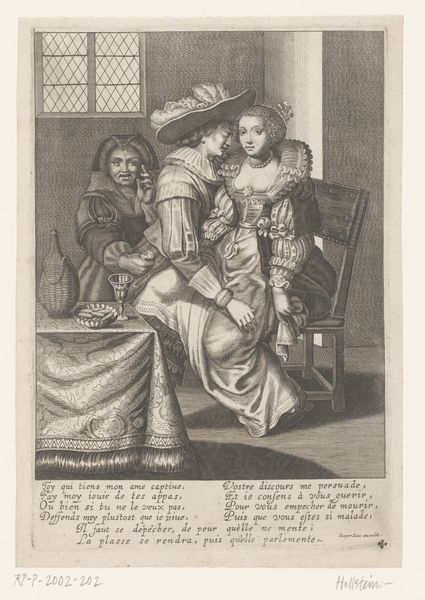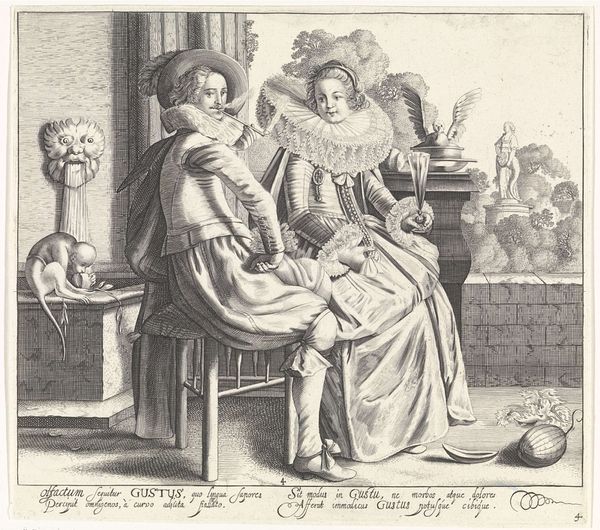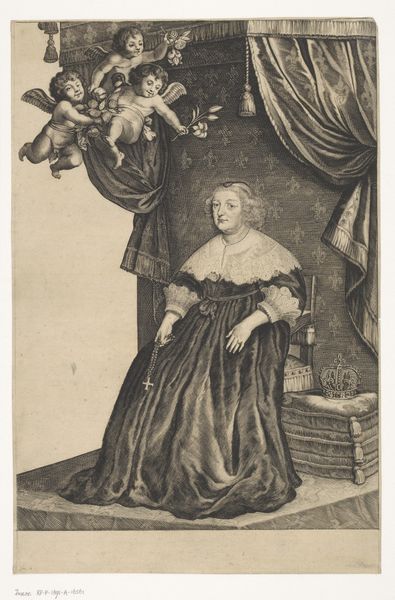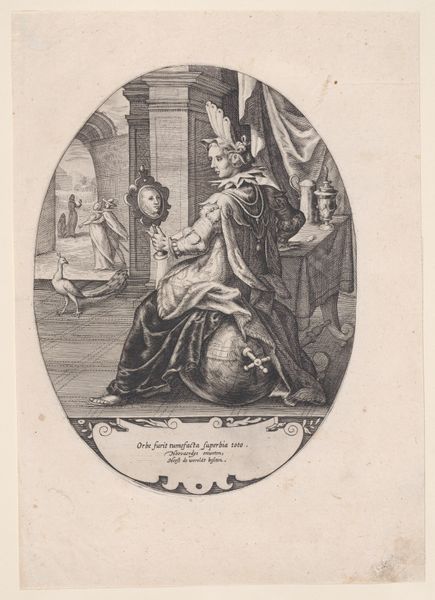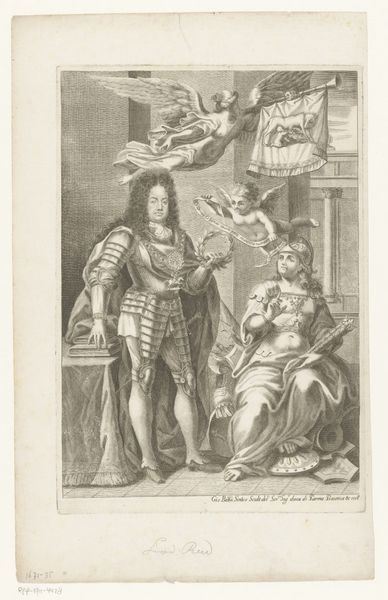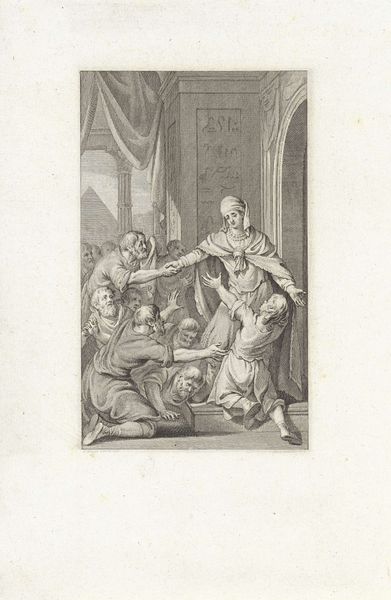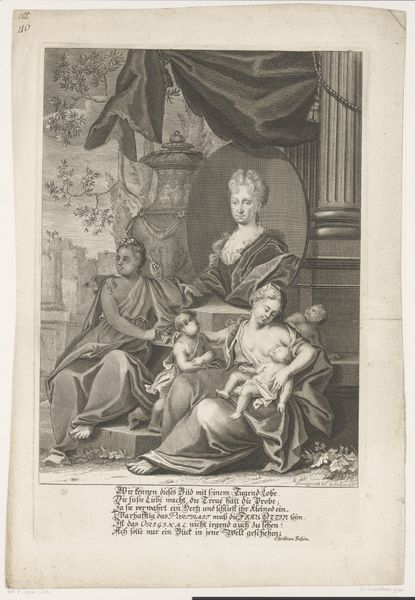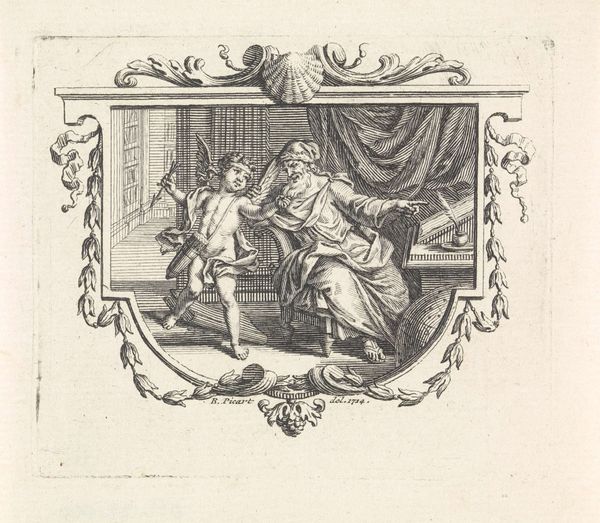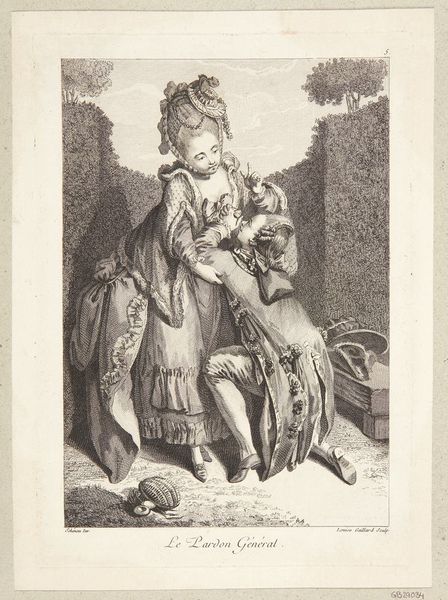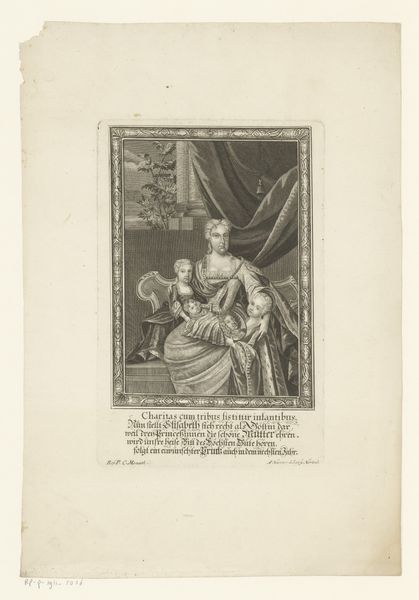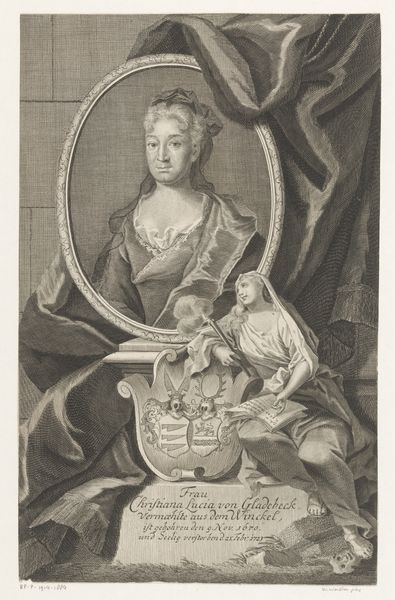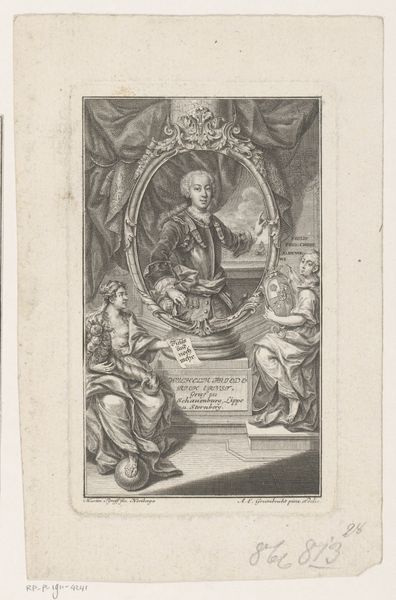
engraving
#
portrait
#
aged paper
#
baroque
#
parchment
#
old engraving style
#
geometric
#
portrait drawing
#
history-painting
#
engraving
Dimensions: height 228 mm, width 167 mm
Copyright: Rijks Museum: Open Domain
Curator: Here we have "Gehoor," or "Hearing," an engraving created sometime between 1607 and 1637 by Willem de Passe. Editor: The delicate line work is striking. It feels fragile, like a precious document, or a dried flower pressed between pages. There's such quiet detail embedded in its monochrome aesthetic. Curator: It's part of a series depicting the five senses, quite a common theme in art of the period. This one shows a woman playing a lute, accompanied by a man on the violin. Note the inscription at the top, "Auditus", reinforcing the central theme. These works weren’t just decorative, they often carried moral or allegorical messages relevant to contemporary society. Editor: Engraving lends itself well to the symbolic function through precision and controlled reproducibility, I suppose. I’m curious, what kind of labor was involved? How long might it have taken De Passe to carve such intricacies into the plate? Think of the physical exertion to create those tiny cross-hatched details... Curator: The art market in the Netherlands during this time relied heavily on printmaking. Engravings like this allowed wider access to art and ideas among the growing middle class, becoming vital forms of public communication and disseminating social norms. It provided the public with reproducible copies of grander works, therefore dictating social value in what to own, share and display. Editor: Right. And prints offered visual culture in a portable and distributable form, like mass media today. Notice how even the cherub figure looks mass-produced. This work’s value isn’t only about aesthetic sensibility, but lies in understanding the labor and material processes. It is an accessible and transportable display of cultural wealth. Curator: It offers insight into the socio-cultural values concerning women, music, and social life in the 17th century. I believe it captures an idealised version of the domestic and personal experiences of the elite at the time. Editor: I agree. Seeing these individuals immortalised through precise incisions adds layers of complexity, where craft meets communication and cultural projection. Curator: I think it makes a beautiful illustration of art's ability to function as both an artistic statement and a record of its time. Editor: It is compelling how the interplay of labour and social value are permanently captured in its material existence, resonating still through touch and sight.
Comments
No comments
Be the first to comment and join the conversation on the ultimate creative platform.
